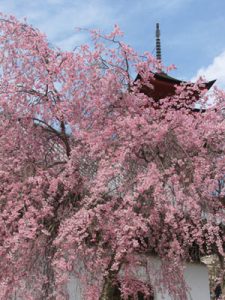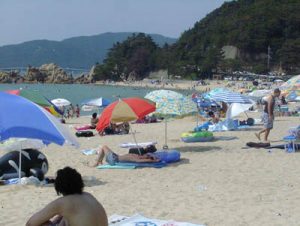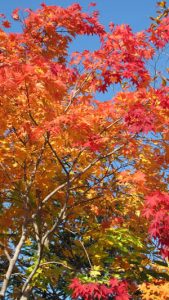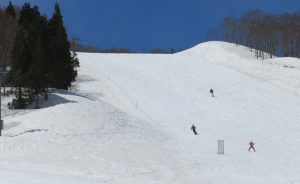When to go

(© Japan by Rail)

(© KU)
In general, Japan has a mild climate, though it’s difficult to talk at all generally about a country which stretches for some 3000km north to south. It can be below freezing and snowing in Hokkaido while southern Kyushu is enjoying sunshine and mild temperatures.
There are reasons to go to Japan at any time of the year but April/May and late October to early December are generally considered the best months to visit.
By April the worst of the Hokkaido winter is over and the rest of Japan is not yet sweltering in humidity. The cherry blossom season is eagerly anticipated and the Japan Meteorological Agency (JMA) has an internet page dedicated to reporting when the blossoms are forecast to flower. Although each year is different, the season starts in Kyushu, generally mid to late March, and progresses northwards climaxing in Hokkaido in May. However, some places, such as Kawazu (see p172 in Japan by Rail for details) and Shitennoji temple in Osaka (see pp148-9 in Japan by Rail for details), have early blossoming cherry so it is even possible to see it in February. And at the other end of the season Ninna-ji temple in Kyoto (see p252 in Japan by Rail for details) has a late flowering cherry.
Try to avoid the school/university holidays from late March to early April and the so-called Golden Week (29th April to 5th May), which includes four national holidays and can feel as if the entire country is on the move; hotels and trains are booked out and prices rise to meet demand. The latter part of May is a lovely time to be in Japan as the weather is often good but not too hot.
The rainy season in June/July (with occasional typhoons) marks the change from spring to summer but the showers are soon replaced by heat and humidity. Humidity is high throughout the summer months so carry bottled water if you are planning long days of sightseeing at this, the hottest, time of the year. Hokkaido is by far the coolest and least humid place in summer, which also makes it one of the busiest.
The school holiday season in August is another busy time, particularly around mid August during the Obon festival when people head back to their home towns to commemorate their ancestors; their ancestors’ spirits are believed to come back to this world then.
The high temperatures and – particularly in the south – blistering heat can last well into September and often there is a lot of rain then. Typhoons strike coastal regions, particularly in Kyushu, Shikoku and Kansai in late summer. Fortunately these are usually predicted a day or two before they hit so it’s unlikely you will be taken unawares.

(© Japan by Rail)
By the beginning of October things usually cool down and dry up. Late October to early December are the months for viewing the autumn leaves (koyo); this can be a spectacular time to visit. The sky is often clear so you have more chance of seeing Mt Fuji and other wonderful landscapes. The autumn colours begin their magnificent display in Hokkaido and gradually move south through the islands, in the opposite direction to the cherry-blossom wave.

If you don’t mind the cold, December and January are also good times to visit as the days can be sunny and clear, though New Year is another major holiday period and many places get crowded. December to March/April is a great time to visit for winter sports such as skiing.
